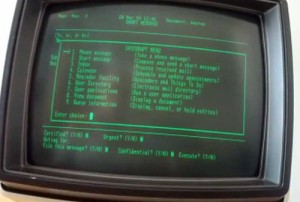by Susan Johnston | Apr 28, 2020 | Get people talking, Get teams moving |
 In this era of social media influencers, anyone who’s read a book or watched a TED talk can self-promote as an expert in that topic. Now that we’re isolating in a pandemic and everyone is rushing online, I could be a legit distancing diva. After all, I’ve been working, coaching and training online since the ’90s. And I know how to use breakout rooms, polls and whiteboards on Zoom and have the power to mute anyone at will.
In this era of social media influencers, anyone who’s read a book or watched a TED talk can self-promote as an expert in that topic. Now that we’re isolating in a pandemic and everyone is rushing online, I could be a legit distancing diva. After all, I’ve been working, coaching and training online since the ’90s. And I know how to use breakout rooms, polls and whiteboards on Zoom and have the power to mute anyone at will.
Unfortunately, I seem to want no part of it anymore. I’m not sure why, except that it worries me.
LEVERAGING TECHNOLOGICAL INTERMEDIATION
Buzzwords make you look smart, right? I see folks in my professional world believing, imagining or pretending that their online tools connect them. They judge that they – both people and tools – are being effective. They wonder what made us think work teams needed to be co-located. Unfortunately, no matter how good the tools are, they provide, at best, a shallow, fabricated, artificial connection. When work requires true collaboration, is real communication happening when we spend our days on Zoom?
I recognize that tools are what we have, as we isolate, temporarily, in this pandemic. And I’m rather fond of what Zoom has done and can do for me and my tribe. What worries me is my certainty that some business people, watching work groups make this ‘remote work thing’ actually work, are thinking, “Hey, this ‘remote work thing’ actually works; let’s keep it going. We’ll save on premises costs, travel and the hassles of dealing with people all day.” The cost issue, alone, will be attractive once the pandemic ends and the accountants tally the financial impact while the PR folk position this to maximize share price.
Worry Number One: What will be missing when technology is, forever, intermediating? Even deluxe, wonderful intermediary platforms (Adobe Connect, iObeya, D2L, etc.) require careful thought about what, why, with whom and in what context we are communicating. Are we considering these things when we set up – or sit through – the seventh online meeting of the day? Or when we reformat our highly interactive in-person workshops as webinars? Or when we move our annual conference to virtual? Or when we forget that there are still neighbourhoods without reliable highspeed?
Worry Number Two: Are we chasing solutions before we understand the problem? And what is the problem, anyway?
 4-Cs Model:
4-Cs Model: Yeah, yeah. I know about the George Box quote, “All models are wrong, but some are useful.” I developed this model, years ago, when I was trying to get bosses, colleagues, clients in the business world to recognize that communication only happens when we make a connection. And connection only happens when our message, or
content, is aligned with the situation people are in, or
context, and the channel or means of
contact.
Context: So let’s start with breaking down the work. What parts of it can people do alone? What parts need collaboration? Do they need to see and manipulate screens together? Or can they talk about it and send each other screenshots? Who needs to collaborate with whom? Who has the info needed? These are context questions. You can probably think of more.
Content: Is the communication about transmitting facts (“Here are the sales figures for March.” “We deployed n times in April.”)? Or does it need a discussion (“What factors affect our sales figures for March?” “What led to the drop?)? Do we need images? Or will data suffice? Are we informing people? Or do we need people to make a decision? Again, who has the info needed? These are content questions. You can conjure up others.
Contact: Next come the means of contact questions. Here are a few big picture considerations. Do the people with the information have a good Internet connection? Can people get through the firewall? How long does it take? Do people know how to use the tools? Do they have company tools, or are children and a spouse also using the family computer? (That’s also a context question, as is the next one.) Do they have a quiet place where they can be on a call? (Yesterday, I heard about someone who, on a confidential call, had to Zoom from the privacy of the bathroom.)
The next step for generating contact questions would be to match tasks and tools. What can be an email? What needs to be a call? Do we need to see each other? How can we do that? Do we need to share screens? How can we do that? What’s the value of having [whoever] here? What’s the downside risk? What about this tool your brother-in-law recommended? Can we use that? Do we really need it? Will it run on everyone’s machine? When you work thorough that task-tool matching exercise, you may discover that you don’t need to spend seven hours a day with your whole team assembled on Zoom.
SUMMARY
We can make working from home work if we’re thoughtful about the content, context and means of contact, matching tools to tasks. We can make it work if we remember that we are dealing with people, unpredictable, creative, quirky and oh so human. As I and others have said before, this is a weird time. Working at home is our response to ‘sheltering in place during a pandemic’ or ‘staying safe in a crisis.’ Let’s hope it’s temporary and not ‘a new way of working.’
by Susan Johnston | Apr 3, 2020 | Get people talking, Get teams moving |
My email and Twitter feeds are generously sprinkled with messages from tool vendors and consultants pitching their solutions to this new challenge of Working From Home (WFH). I want to scream, “This is not teleworking. This is staying at home in a pandemic and trying to work.”
 Tools aren’t the WFH solution, no matter what tool vendors, your boss, the IT department or some dude on Facebook tell you. I’m married to Gadget Guy. As a result of that happy union, and having worked from home since the ’80s, I’ve accumulated heaps of teleworking tools and toys. Speakers, microphones, lights, cables, software, furniture, coffee makers. What do I use? Not many.
Tools aren’t the WFH solution, no matter what tool vendors, your boss, the IT department or some dude on Facebook tell you. I’m married to Gadget Guy. As a result of that happy union, and having worked from home since the ’80s, I’ve accumulated heaps of teleworking tools and toys. Speakers, microphones, lights, cables, software, furniture, coffee makers. What do I use? Not many.
As I wrote in Part 1, when you’re WFH, tools are less important than behaviour. I can’t overstate the importance of the human aspect of working at home. It was always important; now, more so, since we’re working in a cloud of uncertainty.
Still here are a few things I’ve learned about WFH tools.
Team Agreement
This may be the most important WFH tool. Best created as a collaborative effort, it sets out how you’re going to work together. It’s formal, but not immutable. It will evolve as you learn what works for your team.
A team agreement sets out such things as:
- How will we communicate? What tools for what type of communication?
- What are our core hours?
- How will work get done?
- Where is information stored?
- How will we define success? How will we measure that?
- Whose Internet connectivity is iffy – or nonexistent?
- Who is also responsible for looking after children or others?
- Realistically, how productive can we be?
Space
Under normal circumstances, it’s best to have a dedicated place you can call your home office. But these circumstances aren’t normal. You may be sheltering in place with roommates, spouse or children who are also working from home. And pets.
- Privacy may be impossible. As best you can, carve out some turf for everyone to assemble the stuff they need to do their jobs.
- Find a box where they can put that stuff at the end of the work day. (See Habits, below.) Especially important if you have toddlers or pets who might mistake your stuff for playthings.
- Get as comfortable as you can. Your chair will be important. So is lighting, both for doing your work and any video calls you may be on.
- Find a way to communicate with others in your household when you’ll be on a call. That way they won’t be blasting Lizzo or walk into your Zoom call in their underwear. (Yes, we have seen this.)
Communication Software
Speaking of Zoom, there are a gazillion of remote communication tools available. Don’t use too many. When you need to find information someone sent you, you don’t want to have to check email, Slack, Trello, Sharepoint, the google drive and voicemail. (See team agreement, above.)
- Pick tools that are easiest to use and learn how to use them. But don’t make things complicated. Just because Zoom has polls and breakout rooms doesn’t mean you need to use them.
- Video will be important. The information richness chart (see Part One) tells us communication is more effective when we are face-to-face. Unfortunately, the signal may degrade the group is large and all are on camera, so you may, sometimes, need to make a tradeoff.
- Still with Zoom or any video tool, get some light on your face so people can see you.
- Keep calls as brief as possible. Or take breaks. Nobody wants to sit on a video call for more than 40 minutes. Even that’s tough.
- And don’t have people there who don’t need to be.
- Phone people, now and then, just to see how they’re doing. If you’re their boss (or whatever the term is this week), make it clear that you’re checking in, not checking up.
Habits
- Get dressed. Sure, you could work in your jammies, but don’t. If you operate as if you are “going to work,” you will feel more professional.
- Eat lunch. Hide the snacks.
- Know when to knock off. You may not be able to leave your home “office,” but you can leave the work. So do. (After decades of WFH, I still haven’t quite got the hang of that habit.)
- Take breaks. Step away from the computer. Walk the dog. Schnoogle the cat. Sing a song. Bang on the drum (but not all day. Sorry Todd Rundgren.)
So the big idea is: Don’t stress about the tools. Do the best you can with what you have. Do what’s really important. Don’t expect yourself – or anyone else – to be as productive as you are in your workplace. And remember we’re all human.
SUPER REFERENCE – LISETTE SUTHERLAND – COLLABORATION SUPERPOWERS
If you want excellent tips and resources for teleworking, head to Collaboration Superpowers, where our friend Lisette Sutherland has assembled tips, tools, resources, podcasts and workshops, all dedicated to working from home. When the coronavirus hit and people started working from home, she set up a How To page. https://www.collaborationsuperpowers.com/covid19/ It’s loaded with ideas and links to more resources.
by Susan Johnston | Mar 25, 2020 | Get people talking, Get teams moving |

Except for people providing essential services and a few idiots, most of us are in the second week of self-isolation due to COVID-19. Whether it’s lock down, shutdown, quarantine or social distancing, scads of people are now working from home. Nobody knows for how long.
As businesses scramble to get set up with communication and collaboration tech tools to keep the wheels of industry turning, I thought I’d write a series of posts to share what I’ve learned in 26 years of working, teaching and learning from a computer connection.
THIS IS NOT NORMAL TELEWORKING
The first thing to remember is that, night now, we’re working from home as a result of a pandemic. Anything that anyone, including me, tells you about their past teleworking experiences needs to be viewed through a lens of “this ain’t normal.” This is not an experiment. We’re not doing this to save money or travel time. We’re trying to slow the spread of a deadly virus. Government health departments and, in some places, uniformed officers, are telling us to stay at home, for our own sake and that of others. People are, justifiably, distracted and concerned and that will affect everything they do.
Any organization that thinks people working from home will produce the same amount and quality of work as they did in the office is in Fantasy Land. In normal times, there’s a productivity drop, at first, as people sort out the procedures and processes involved in teleworking. In normal times, they’re not working with concern for their health, their loved ones, their jobs, the economy and the food supply. Lower your expectations. (This applies whether you are the boss or an employee.)
THE BIG IDEA
Remember you’re dealing with humans. Tools and processes matter but, despite what the vendors claim, they’re not the key to working at home. What matters is human connection. We’re a social species. Even when our work can be done solo, it’s important for us to know we’re working together, part of something bigger.
 I was part of a team that started working from home in the early 1990s. As teleworking pioneers, our tools were lousy, by today’s standards – PCs on modem dial-up to a LAN/WAN, IBM’s chat tool, no email, no Internet, no printers, and the ability to call into a teleconference line. As we quickly learned, the tools were not going to be the key to success.
I was part of a team that started working from home in the early 1990s. As teleworking pioneers, our tools were lousy, by today’s standards – PCs on modem dial-up to a LAN/WAN, IBM’s chat tool, no email, no Internet, no printers, and the ability to call into a teleconference line. As we quickly learned, the tools were not going to be the key to success.
We made being remote work through reaching out to each other. We used that conference line for a quick early morning meeting to check in with each other and synchronize our work. (Agilists will recognize this as a virtual stand-up.) We used the chat system to share personal news, vent frustration, celebrate milestones, post dumb jokes. (This was before the era of cat photos.)
As managers, my boss and I felt we had a responsibility to keep people connected to each other and to the organization. He and I chatted every morning – a virtual coffee break. I did the same with my team in the afternoon. We made it very clear, by the nature of the conversation, that we were checking in, not checking up. This was critical in our time of change. It’s more critical, today, as people deal with additional burden of uncertainty and worry caused by the pandemic.
Invite your team to design its own ways of staying in touch and keeping the human connection going. Keep activities optional. Not everyone wants to attend a Zoom Happy Hour.
 COMMUNICATION
COMMUNICATION
All forms of communication become critically important when you are not face-to-face. The illustration to the right shows what communication professionals call “media richness.” We get the most information from a face-to-face discussion. (I currently believe there’s an even higher level – face-to-face with a whiteboard. But that’s a topic for another day.) The least info is conveyed by a poster or mass mailing.
When we’re together, we don’t rely on words, alone, to convey our meaning and intent. We have tone, body language, pace, intensity, volume. When we have only words, such as when we’re sending a text or an email, we must be careful about our choice of words. You’re not just responsible for the message you send; you’re responsible for the way it’s received. Be sure your intent and meaning are clear.
Give everything a “tone check” before you hit [Send]. And don’t rely on emojis to convey your tone. Your cute little grin may not travel well across platforms and applications. Instead, be conscious of your words and explain your meaning clearly.
You may recall that inside your mobile phone, there’s an actual phone. A call may not be as effective as a face-to-face conversation, but it’s kilometers ahead of anything you can write and probably a lot faster. Whatever method you use to communicate, your investment of time and effort in being clear will avoid misunderstanding, speculation and all the ugliness that can accompany them.
Up next: Teleworking tools
Coming soon: Distractions, staying sane, online training.
by Susan Johnston | Nov 4, 2019 | Get people talking |
 “Running good meetings is THE most important thing we do. I can’t understand why more people don’t understand that.”
“Running good meetings is THE most important thing we do. I can’t understand why more people don’t understand that.”
So says a Scrum Master (and wise colleague) I spoke with recently. I was explaining (OK, complaining) that I can fill a coaching course in a few days, but there seems to be less appetite for facilitation workshops. And why would that be so?
“Maybe nobody knows what facilitation is,” said my friend. “Could you rebrand it?”
HARNESS THE POWER OF THE GROUP
If team or group members have to set direction, make decisions, plan collaborative action, solve a problem or sort out an issue, someone trained in facilitation is a huge help. Good facilitators know how to create conditions where people can share ideas, express opinions and discuss them in a productive way. Facilitators develop and follow a process that encourages participation, discovery, discussion, deliberation and good decisions. In short, good facilitation helps people think better together.
As the role of leaders and managers evolves from giving directions to setting direction, and from taking control to giving control, these skills become increasingly important. A facilitative leader can harness the power of the group.
A facilitator helps a group free itself from internal obstacles so a meeting’s desired outcome can be pursued efficiently and effectively. Chinese philosopher Lao-Tse described this, over 2,400 years ago. “A good leader is best when people barely know that he leads. A good leader talks little, but when the work is done, the aim fulfilled, all others will say, ‘We did this ourselves.’ “
In a more recent century, Tom Kayser wrote in his book, Mining Group Gold, “In the purest sense, when wearing the ‘facilitator’s hat,’ an individual acts as a neutral servant of the people. By that I mean that the person focuses on guiding without directing, bringing about action without disruption, helping people self-discover new approaches and solutions to problems, knocking down walls that have been built between people while preserving structures that are of value and, above all, appreciating people as people. All of this must be done without leaving any fingerprints.”
Facilitation skills create and maintain an environment or “container” for the group, where productive discussions can lead to good decisions. In other words, meetings don’t waste people’s time.
Our next workshop takes place APRIL 30-MAY 1, 2020 in Toronto.
YOU CAN LEARN TO MAKE MEETINGS MATTER
With collaboration and teamwork as hallmarks of Agile work, facilitation becomes a key skill for Scrum Masters, Product Owners, Agile Coaches and anyone who leads teams and/or meetings.
That’s why, in early 2016, I developed a two-day workshop to teach it – Facilitation for an Agile Workplace. Successful completion earns participants International Consortium for Agile (ICAgile) team facilitation certification, the ICP-ATF. Ellen Grove joins me in leading this workshop, adding her long perspective and experience as a coach and trainer to mine.
 Workshop participants explore the facilitator’s stance and mindset along with the pattern of a successful meeting. Then we get practical. We share tools you can use, right away, for planning, gathering data, generating insights and deciding what to do. We explore maintaining neutrality, team dynamics, dealing with difficult situations (or people).
Workshop participants explore the facilitator’s stance and mindset along with the pattern of a successful meeting. Then we get practical. We share tools you can use, right away, for planning, gathering data, generating insights and deciding what to do. We explore maintaining neutrality, team dynamics, dealing with difficult situations (or people).
Of course, we look at facilitating Agile practices. And we’ve built a visual facilitation component throughout the two days, to bring the power of visibility, so important in agile practice, to our facilitation.
I COULD SAY MORE BUT . . .
it might make more sense to hear from folks who’ve been part of our workshop:
- “This training has made me realize how facilitation techniques and mindset can help Agile teams to communicate better and achieve next level of self realization.”
- “This program was great at teaching the arc of facilitation and the planning that a skilled facilitator should do when preparing for a session. I learned a great deal from the course and have been putting these skills into practice with excellent results!”
- “By taking facilitation skills workshop, it changed my perspective about what a good facilitator is, and it brought to me techniques and tools to pull out the most of a team meeting.”
- “Sue and Ellen put a lot of thought and effort into putting the workshop together that may not be evident during the training, since they conducted it with ease and flow. However each of the activities served a purpose in driving home the important points of the material. Excellent workshop and highly recommended!”
- “Agile Facilitiation Skills workshp definitely changed my perspective about facilitation. It provided me the tools, framework and strategies to better engage the audience in an agile way.”
- “Ellen and Sue provide a wonderful course that has tools and tricks that are practical and can be applied to your job immediately. As facilitators, they provide tremendous energy and bring a safe and joyful atmosphere over the course of two days.”
- “I had an opportunity to attend “Facilitation Skills for the Agile Workplace 2.0″ taught by Sue and Ellen. They are both are amazing, talented and passionate facilitators. Course contents were very well taught and explained. Sessions had enough hands-on activities which helped us understand practical implementation of what we learnt.”
- “Amazing class! I applied what I learned the next day and every day since. Sue and Ellen did a fantastic job facilitating and gave us tons of great techniques with enough time to practice. If you interact with people, take this class. You won’t be disappointed.”
 Facilitation is much more interesting and valuable than people recognize. Maybe that’s because, when done well, it’s almost invisible. So, I think my Scrum Master friend is right. (He often is.) Let’s rebrand facilitation. Let’s call it “Decision Making, Effective Communication and Awesome Teamwork for Any Workplace.”
Facilitation is much more interesting and valuable than people recognize. Maybe that’s because, when done well, it’s almost invisible. So, I think my Scrum Master friend is right. (He often is.) Let’s rebrand facilitation. Let’s call it “Decision Making, Effective Communication and Awesome Teamwork for Any Workplace.”
Our next workshop takes place APRIL 30-MAY 1, 2020 in Toronto.
Facilitation for an Agile Workplace meets the requirements for ICAgile’s Agile Team Facilitator certification.
by Susan Johnston | Jan 11, 2016 | Build your own skills, Get people talking |
Face-to-face communication is the most powerful business tool we will ever have. So why don’t we use it more often? Or more effectively? Or more consciously?
For over a decade, I’ve been encouraging people to get out from behind their tools and technologies and talk to each other. People nod vigorously. Then they send off an e-mail with a .ppt attached. Or they type something into Jira and feel the product user’s needs are well described. Maybe they post a Tweet, hoping the right people will read it. Have you ever said, “Yes, I talked to [Whomever],” then recall later that what you actually did was correspond in Slack? Tools can fool us into thinking we’re communicating.
 Tools create contact. They can also share certain kinds of information. That is all. We mustn’t confuse that with connection, communication, conversation, dialogue or real interaction that leads to fresh ideas or new ways of working. Yet we do. We see a situation that will create a problem for our project and we send a memo. We need executive support for an initiative and we give them a PowerPoint. We would rather type than talk.
Tools create contact. They can also share certain kinds of information. That is all. We mustn’t confuse that with connection, communication, conversation, dialogue or real interaction that leads to fresh ideas or new ways of working. Yet we do. We see a situation that will create a problem for our project and we send a memo. We need executive support for an initiative and we give them a PowerPoint. We would rather type than talk.
When we use text, whether it’s paper, email, text messages or something else, we may be transmitting information, but not necessarily communicating. Even when we actually are together, we can fail to communicate. Are your meetings a series of broadcast monologues? “I did this yesterday. I’m working on this today. Nothing’s blocking me.” Or do people actually talk about the work they are doing together?
The first value of the Agile Manifesto for software development emphasizes “individuals and interactions over processes and tools.” The meaning of the world “interaction” is a mutual or reciprocal action. In its scientific meaning, it’s a situation in which two or more objects or events act upon one another to produce a new effect. That’s the sort of thing that can happen in a good conversation.
But it’s easy to be distracted by our tools and processes. Maybe it’s because these are things we can measure. Are we having daily stand-up meetings? Tick the box. Retrospectives after every sprint? Tick again. All user stories in the system? Another tick. Tools and ceremonies are useful in creating good work, but they are not going to substitute for a conversation. At best, they can provide a reason to talk. We say, “A user story is an invitation to a conversation.” Do we truly understand what that means?
 The Media Richness Theory, developed in corporate communications in the mid-1990s, ranks communication methods according to how well they reproduce the information sent through them. Face-to-face communication sits at the top. When we’re talking together, we have the benefit of emotional and social cues, through body language and tone. Importantly, we also have a very short feedback loop. We know, at once, if our message has been received. We also have the opportunity to ask for and provide clarification and confirm understanding.
The Media Richness Theory, developed in corporate communications in the mid-1990s, ranks communication methods according to how well they reproduce the information sent through them. Face-to-face communication sits at the top. When we’re talking together, we have the benefit of emotional and social cues, through body language and tone. Importantly, we also have a very short feedback loop. We know, at once, if our message has been received. We also have the opportunity to ask for and provide clarification and confirm understanding.
More recently, Alistair Cockburn created a similar model, based on his own observations on projects. Modified, first by Scott Ambler, later by Chris Chan, it suggests that having a meaningful visual depiction of the information adds even more richness.
 A conversation at a white board, for example, can provide even more meaningful conversation than conversation alone. We have all the richness of a face-to-face conversation with the additional ability to visualize and manipulate information as we discuss it.
A conversation at a white board, for example, can provide even more meaningful conversation than conversation alone. We have all the richness of a face-to-face conversation with the additional ability to visualize and manipulate information as we discuss it.
Some of the most productive conversations are those that are well facilitated. A good facilitator creates a container for thinking together and makes it safe for people to express their ideas. Facilitation provides enough structure to engage people and enough freedom for them to be creative. It encourages full participation and ensures the outcome of the discussion is “owned” by the group and can be implemented. While it often falls to the agile coach or scrummaster, facilitation can be anyone’s job. Helping people talk together is a learnable skill that will increase in value as teamwork and cross-functional collaboration become the norm.
Can we recover the art of conversation? Generations of thinkers and writers have moaned that conversation is becoming a “lost art.” There’s new evidence that it’s true. The most recent call to action comes from Sherry Turkle in her 2015 book, Reclaiming Conversation: The Power of Talk in a Digital Age (Penguin Press, New York). A sociologist, psychologist and MIT professor, she’s been observing the impact of technology on society for over 30 years. She contends that our tools, particularly our “always on” mobile devices, are limiting our ability to hold meaningful, impactful conversations.
We can rediscover and recover this dying art by reminding ourselves of the importance, impact and value of real conversation as a workplace tool – and then doing something about it. We can recognize our tech tools and processes for what they are – processes and tools. We can use them for their intended purposes – but not indulge in the illusion that we are interacting when we use them. Step away from the screens, apps and devices. Step towards the white board with someone who matters. Can we talk? You bet!
In case you missed it: Can we talk? Getting back to conversation – Part 1
by Susan Johnston | Jan 9, 2016 | Build your own skills, Get people talking |
Ten years ago, my writing and conference talks were filled with predictions that conversation would be the Next Big Thing.

2007
Citing evidence from multiple disciplines, I called for organizational leaders to recognize that the desire for connection is a basic human trait and make in-person interaction a deliberate priority. Instead of trying to master blogs, podcasts, email and other tech-centric communication channels, I urged them to get out and talk to people.
But Next Big Thing would not be face-to-face communication. In 2007, along came the iPhone. Mobility became the NBT. And our world changed. Today, our mobile devices keep us “connected” and “talking” to people around the world 24/7. Yet, is it a true connection?
 In her 2015 book, Reclaiming Conversation: The Power of Talk in a Digital Age (Penguin Press, New York), sociologist/psychologist and MIT prof Sherry Turkle suggests our “always on” connections, such as facebook, Instagram, Twitter and thousands of other apps, provide the illusion of communication, but actually impede conversation. We can avoid real conversation by sending a text. We can post a picture rather than engage with someone. We can edit ourselves into a carefully constructed persona that presents someone we are not and will never be. We can post messages to facebook “friends” while ignoring the real friends in the room with us. We can get attention without the unpredictable untidiness of getting close.
In her 2015 book, Reclaiming Conversation: The Power of Talk in a Digital Age (Penguin Press, New York), sociologist/psychologist and MIT prof Sherry Turkle suggests our “always on” connections, such as facebook, Instagram, Twitter and thousands of other apps, provide the illusion of communication, but actually impede conversation. We can avoid real conversation by sending a text. We can post a picture rather than engage with someone. We can edit ourselves into a carefully constructed persona that presents someone we are not and will never be. We can post messages to facebook “friends” while ignoring the real friends in the room with us. We can get attention without the unpredictable untidiness of getting close.
A Gloomy Outlook?
Turkle has spent 30 years investigating our society’s relationship with technology. In this book, her ninth, she descibes offices where workers lay out their multiple devices, don headphones and spend the day exchanging electronic messages in isolation. She describes the “rule of three” – as long as three people in a face-to-face group are actually talking to each other everyone else can be looking at their phones. She quotes people who conduct family discussions by text so they can “fight without saying things [they’ll] regret” – and have a record of who said what. She describes toddlers competing with mobiles for their parents’ attention, new moms texting while nursing newborns, and children who talk about what’s on their phones rather than what’s in their heads. What worries her most is her belief that we are losing the ability to hold real, meaningful conversations.

IBM’s PROFS
Turkle’s work made me examine my own relationship with online communication tools. I’ve used them since pre-Internet days, when I sent email-ish things on the green screens of mainframe terminals. Today, I used tools in “The Cloud,” wherever that is, that we could scarcely imagine 10 years ago – Slack, Twitter, Trello, Ruzuku, Zoom and more. (I’m still waiting for “Beam me up, Scotty.”) They’re handy, yet today’s most valuable and rewarding connections were in cafés, face-to-face with colleagues and clients. I could look them in the eye, feel their energy, sense their presence, offer my full attention and really be with the people I chose to be with.
Text is fine for transmitting information, but it’s not the tool for real communication. A recent text exchange led friends to a weird misunderstanding. Words intended as heartfelt encouragement came off as preachy. The carefully crafted response was interpreted as a snotty retort. Nuance, subtlety, emotion, energy – all missing. Words are not enough. How often have we spent hours crafting careful responses to emails when we should have just picked up the telephone and sorted it out through conversation?
So what can we do?
Which brings us back to Turkle and Reclaiming Conversation. She paints a bleak picture, yet offers hope. We don’t need to give them up, but we need to choose how we use these devices. We can designate tech-free zones, declare a mobile moratorium during meals, establish no-device hours, banish them from meetings. She writes, “If a tool gets in the way of looking at each other, we should use it only when necessary. It shouldn’t be the first thing we turn to.”
We can ask ourselves if our relationship with technology is helping us live better, more fulfilling lives or getting in the way of important moments and real connection. Our insights about the way we use our tools will guide us. The art – make that the gift – of conversation is too important to lose.
Can we talk? Getting back to conversation – Part 2
 In this era of social media influencers, anyone who’s read a book or watched a TED talk can self-promote as an expert in that topic. Now that we’re isolating in a pandemic and everyone is rushing online, I could be a legit distancing diva. After all, I’ve been working, coaching and training online since the ’90s. And I know how to use breakout rooms, polls and whiteboards on Zoom and have the power to mute anyone at will.
In this era of social media influencers, anyone who’s read a book or watched a TED talk can self-promote as an expert in that topic. Now that we’re isolating in a pandemic and everyone is rushing online, I could be a legit distancing diva. After all, I’ve been working, coaching and training online since the ’90s. And I know how to use breakout rooms, polls and whiteboards on Zoom and have the power to mute anyone at will. 4-Cs Model: Yeah, yeah. I know about the George Box quote, “All models are wrong, but some are useful.” I developed this model, years ago, when I was trying to get bosses, colleagues, clients in the business world to recognize that communication only happens when we make a connection. And connection only happens when our message, or content, is aligned with the situation people are in, or context, and the channel or means of contact.
4-Cs Model: Yeah, yeah. I know about the George Box quote, “All models are wrong, but some are useful.” I developed this model, years ago, when I was trying to get bosses, colleagues, clients in the business world to recognize that communication only happens when we make a connection. And connection only happens when our message, or content, is aligned with the situation people are in, or context, and the channel or means of contact.






 Workshop participants explore the facilitator’s stance and mindset along with the pattern of a successful meeting. Then we get practical. We share tools you can use, right away, for planning, gathering data, generating insights and deciding what to do. We explore maintaining neutrality, team dynamics, dealing with difficult situations (or people).
Workshop participants explore the facilitator’s stance and mindset along with the pattern of a successful meeting. Then we get practical. We share tools you can use, right away, for planning, gathering data, generating insights and deciding what to do. We explore maintaining neutrality, team dynamics, dealing with difficult situations (or people).






